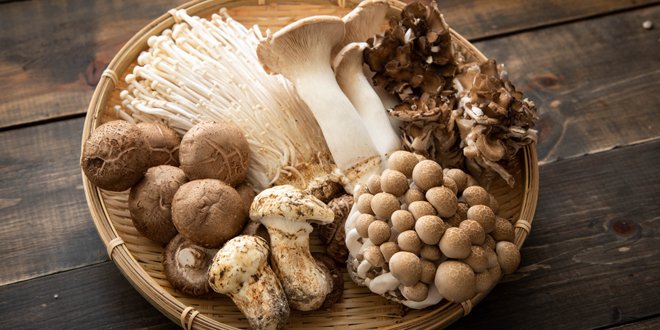
People have been consuming mushrooms and using them for medicinal purposes since ancient times. And now, research is showing that mushrooms may be effective in helping to regulate blood sugar levels in diabetes too. Read on to find out why diabetes and mushrooms are a good match.
What kinds of mushrooms are there?
There are literally thousands and thousands of mushroom species around the world, but not all are edible. Some of the more commonly used edible kinds include the white button, cremini, shitake, portobello, oyster and straw mushrooms. For the adventurous, there are many more varieties, such as the vibrant yellow Maitake mushroom found in North America and Japan which is purported to taste like fried chicken!
Why are mushrooms good for you?
Fresh mushrooms are 90% water, low in fat, high in vitamins B and D, and they’re filled with fibre. All these factors make them a good choice in a healthy diet. Mushrooms also contain selenium, an antioxidant which is good for immune function. Although there are no definitive studies to support efficacy, shitake mushrooms have been used to treat the common cold for hundreds of years and reishi mushrooms have long been used by naturopaths as a potent immune builder.
Some research is showing that mushrooms may help in diabetes management. One study showed that oyster mushrooms decreased hyperglycemia in animals with type 2 diabetes. Numerous other research studies have highlighted the potential of various mushrooms in improving insulin resistance and gut health, while helping regulate blood sugar levels in diabetes.
So, mushrooms won’t raise your blood sugar?
Mushrooms are low in carbohydrates so they won’t spike your blood sugar levels like pasta or bread would. In fact, mushrooms have a low glycemic index (GI) and contain soluble fibre to help keep your blood sugar in check, making them particularly good for your diabetes diet.
How can you get more mushrooms in your diet?
Apart from being good for us, mushrooms taste great on a variety of foods, such as pizza, salad and pasta. They’re also a tasty addition to soups and stews. And while mushrooms may vary in taste and appearance, they are all similarly nutritious too. The healthiest ways eat them are raw, roasted, or grilled. Just keep in mind that while those wild mushrooms you find on your next hike may look tempting, they could be poisonous so avoid picking at all costs.
For your next meal, try substituting rice, corn or mashed potatoes with fresh cooked mushrooms. Or try this tasty mushroom-rich recipe with chicken or use this side dish of roasted mushrooms.
Find more tips on healthy menu planning when you have diabetes here.
As a low-carb, low-sugar, high-fibre food, mushrooms are an ideal option to add to your meal planning. More mushrooms please!

